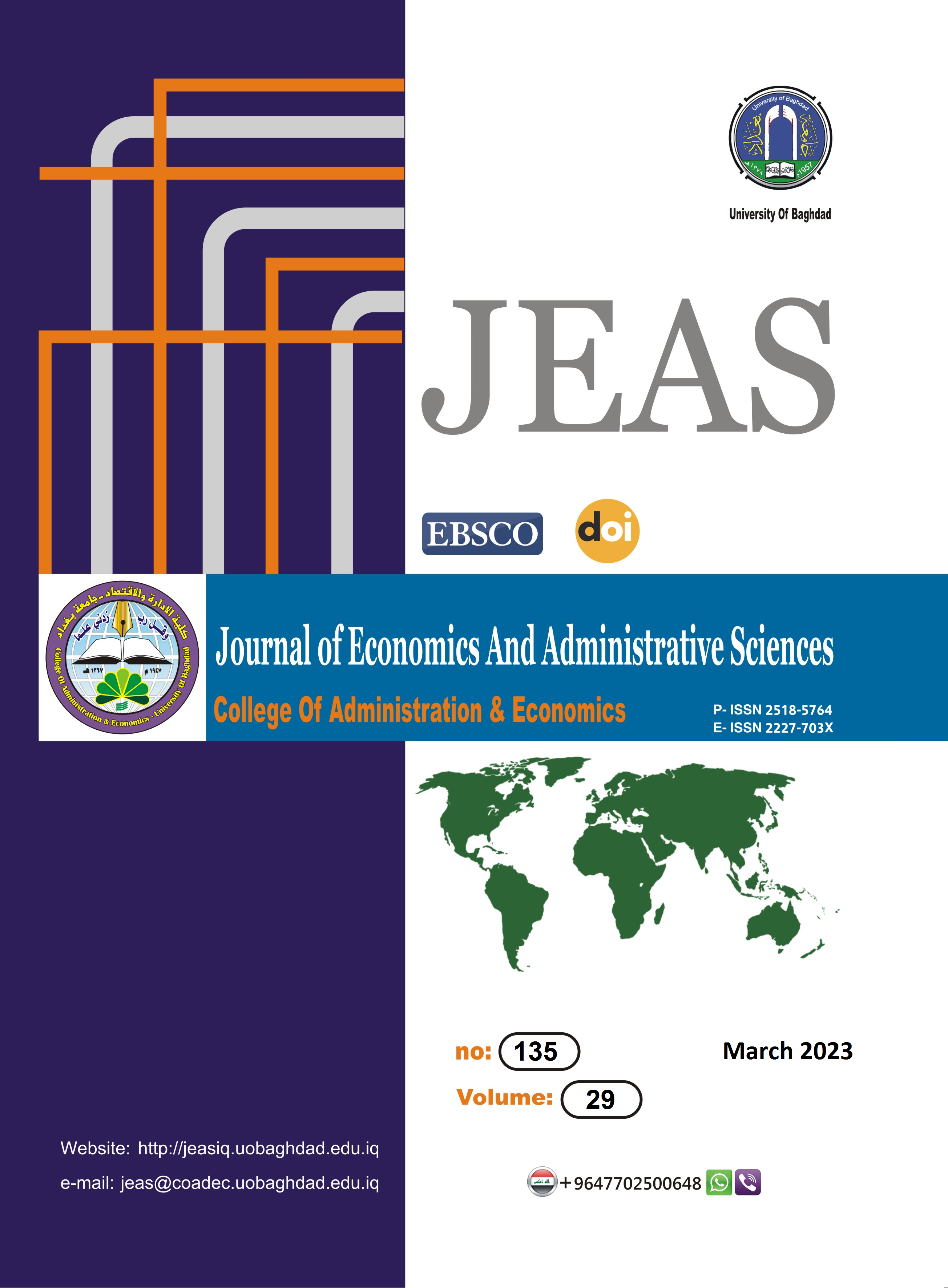Role of Balanced Scorecard in Evaluating Total Productive Maintenance Performance
DOI:
https://doi.org/10.33095/jeas.v29i135.2508Keywords:
Balanced Scorecard, Performance Evaluation, Total Productive Maintenance, بطاقة العلامات المتوازنة، تقويم الأداء، الصيانة الإنتاجية الشاملة.Abstract
In light of the general inadequacy in the performance of the economic units operating in Iraq, and the contemporary developments in all the various sciences, Iraqi economic units have become obligated to use modern technologies applied around the world. Keeping abreast of these developments is done by moving away from traditional methods of evaluating performance and applying approved and accepted methods of evaluating performance. This will lead to an increase in the efficiency and effectiveness of the activities of economic units. In addition, this drives to reduce production costs. Accordingly, this study aims to clarify the application of the balanced scorecard technique and its role in evaluating the overall performance of the economic unit and the performance of total productive maintenance in particular. The study also aims to highlight the role of the balanced scorecard technique in evaluating the performance of total productive maintenance in order to develop the Iraqi industrial sector. The research selects the sulfuric acid factory in Al-Furat Company for Chemical Industries and Pesticides as a sample for the study. The most important finding is that the application of the balanced scorecard technique, based on the measures that have an impact on the overall productive maintenance, contributes to evaluating the total performance of the economic unit and evaluating total productive maintenance activities.
Paper type: Research paper.
Downloads
Published
Issue
Section
License

This work is licensed under a Creative Commons Attribution-NonCommercial-NoDerivatives 4.0 International License.
Articles submitted to the journal should not have been published before in their current or substantially similar form or be under consideration for publication with another journal. Please see JEAS originality guidelines for details. Use this in conjunction with the points below about references, before submission i.e. always attribute clearly using either indented text or quote marks as well as making use of the preferred Harvard style of formatting. Authors submitting articles for publication warrant that the work is not an infringement of any existing copyright and will indemnify the publisher against any breach of such warranty. For ease of dissemination and to ensure proper policing of use, papers and contributions become the legal copyright of the publisher unless otherwise agreed.
The editor may make use of Turtitin software for checking the originality of submissions received.


























